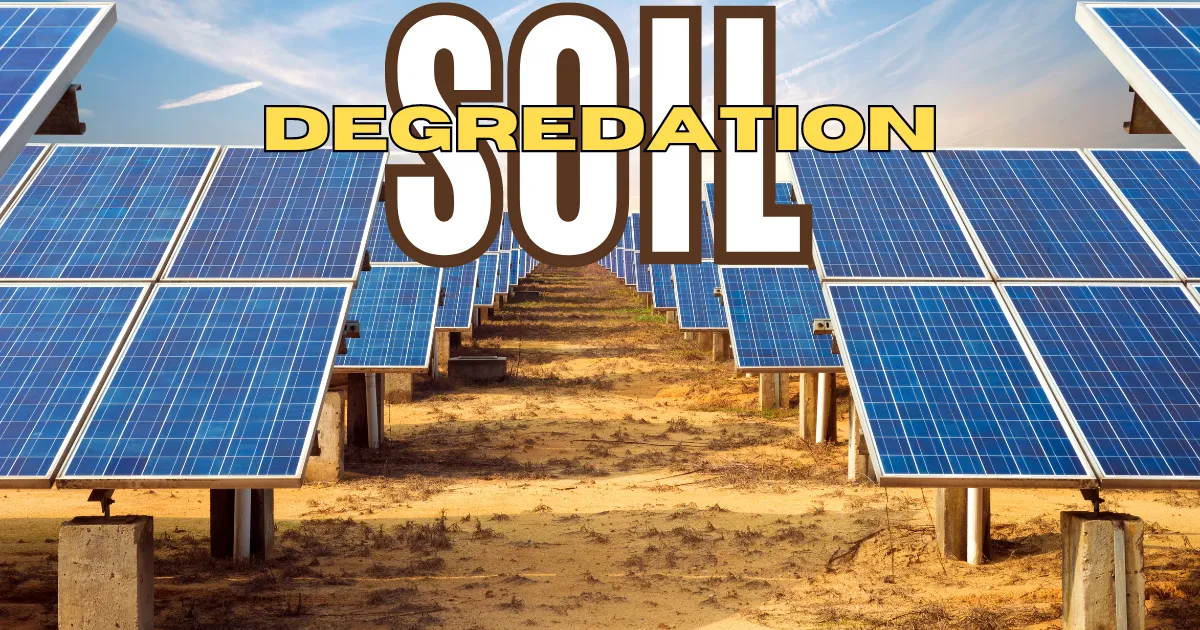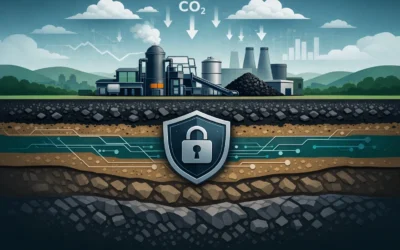How Dynamic Carbon Credit Offers a Sustainable Solution
As the global community rallies around the urgent need to reduce carbon emissions and transition to renewable energy, solar power has emerged as a key player in the fight against climate change. Let’s examine the challenges of solar. The rapid expansion of solar farms, particularly on fertile farmland, has sparked concerns about solar farm soil degradation and the long-term impacts on agricultural productivity. While solar energy is crucial, it is not without its challenges. Dynamic Carbon Credit presents a complementary solution that not only offsets carbon emissions but also enhances soil health and sustainability, offering a viable alternative to the solar initiative.
The Challenges with Solar Farm Construction and Soil Health
- The Impact of Solar Panels on Farmland
- The installation of large-scale solar farms often involves extensive land clearing, grading, and the deployment of heavy machinery. These activities can disrupt the natural soil structure, leading to solar energy soil degradation. The removal of vegetation during construction exposes the soil to wind and water erosion, which can strip away the topsoil, the most fertile layer critical for crop production.
- Agricultural Soil Erosion Due to Solar Farms
- One of the most pressing issues with solar farm construction is agricultural soil erosion. The heavy machinery used during construction, coupled with the removal of vegetation, can lead to significant disruption of the soil structure. Without adequate ground cover, soils become vulnerable to erosion from wind and rain, leading to a loss of valuable topsoil, which is essential for sustainable agriculture.
- Long-Term Effects of Solar Farms on Soil Health
- Even after solar panels are installed, the long-term effects of solar farms on soil health remain a concern. The shade cast by solar panels can alter the microclimate of the soil beneath, affecting its temperature, moisture levels, and biological activity. Over time, this can lead to a decline in soil health, reducing its ability to support plant life and contribute to the broader ecosystem.
- Economic and Environmental Trade-Offs
- While solar leases offer farmers higher immediate returns compared to traditional farming, the long-term consequences for soil health and agricultural productivity are concerning. The economic benefits of solar farming are often offset by the potential solar farm soil degradation that reduces the land’s agricultural potential, impacting local food production and the rural economy.
Dynamic Carbon Credit: A Sustainable Alternative to Solar Farms
Carbon Offsets and Soil Health
Dynamic Carbon Credit offers a robust alternative to the solar initiative by focusing on carbon offsets that directly enhance soil health. By incentivizing land management practices that increase carbon sequestration in the soil, Dynamic Carbon Credit not only offsets carbon emissions but also improves soil fertility, water retention, and overall ecosystem resilience. Practices such as cover cropping, no-till farming, and organic amendments are central to this approach, leading to healthier soils and more sustainable agricultural systems.
Enhancing Carbon Sequestration
Unlike solar farms, which can disrupt soil ecosystems, Dynamic Carbon Credit encourages practices that build soil organic matter and sequester carbon over the long term. This approach helps to lock carbon in the soil, reducing atmospheric CO2 levels and contributing to climate change mitigation. Additionally, healthy soils are better able to withstand extreme weather events, such as droughts and floods, making them more resilient in the face of climate change.
A Comprehensive Solution for Climate Action
Dynamic Carbon Credit provides a comprehensive solution that addresses both climate change and soil health. By supporting practices that enhance carbon sequestration in the soil, Dynamic not only offsets emissions but also contributes to the long-term sustainability of agricultural land. This dual benefit makes Dynamic Carbon Credit a powerful tool in the fight against climate change, offering an alternative to solar energy that preserves the health of our planet’s most vital resources—its soils.
Balancing Renewable Energy with Soil Conservation
While solar energy is an essential component of the global strategy to combat climate change, it is not without its challenges, particularly regarding soil health and agricultural sustainability. Dynamic Carbon Credit offers a sustainable alternative that not only offsets carbon emissions but also enhances soil health, ensuring that our efforts to combat climate change do not come at the expense of our agricultural future. By integrating carbon sequestration into land management practices, Dynamic Carbon Credit provides a balanced approach that supports both renewable energy and soil conservation, paving the way for a more sustainable and resilient planet.





